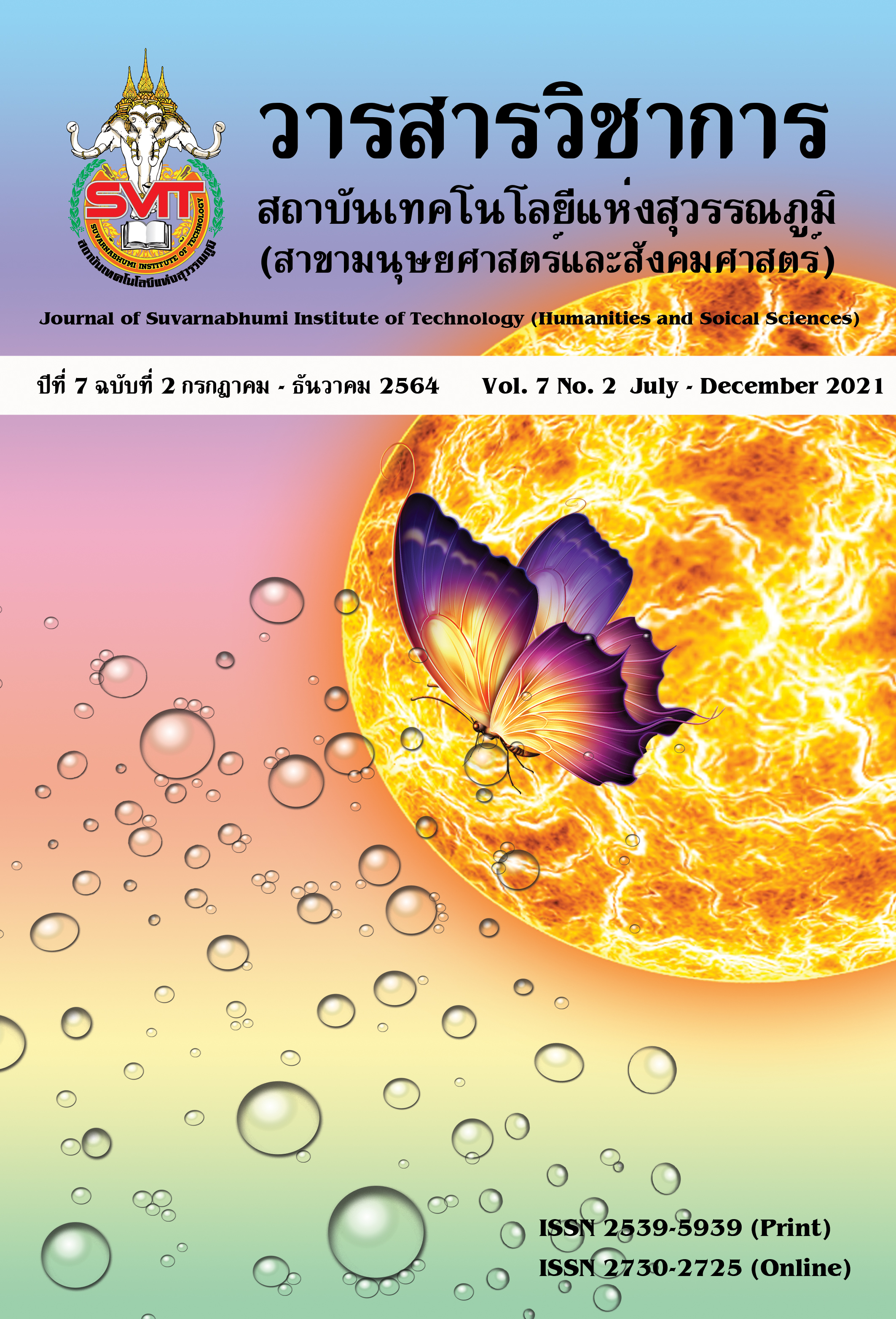THE EFFECT OF VIRAL VIDEO ON PURCHASE INTENTION THROUGH CUSTOMER ENGAGEMENT OF FRANCHISE BEVERAGE PRODUCT
Keywords:
viral video marketing, Influence viral videos, Franchise drinksAbstract
Human communication in modern times is fast. Can spread information News thoroughly and extensive Especially communication through various electronic tools that are very popular in the age of digital communication Communicating with online networking Usually have the form of viral marketing communication or viral video marketing because it is a low cost and effective marketing. When compared to other marketing methods and weighs more to create credibility for consumers Advertising in other formats Because viral communication via social media is not necessary for the messenger and the receiver to have a close relationship, then it will influence the confidence building in That product and service, but only consumers and consumers telling each other And resulting in products and Services that pass the word-of-mouth communication process in this digital age have a very high level of reliability.
Creating a current trend to convince consumers If using advertising through traditional media May not be enough and does not meet the needs of consumers in the digital age that can access information at all times, social media is becoming another channel with full access to information. And convenience for consumers Although consumers' trust in advertising in the media. In the main direction may decrease but in the other direction, it is found that consumers turn to pay attention to the information received from People who are more reliable in the online world before deciding to buy more products and services. Influential person In the online world, it has become a marketing tool that brands must seek to use as a medium for communication in Contact with consumers Including business owners themselves can also be a marketing tool.
If it is a person that the masses know However, choosing the influential person should also consider the time period, the brand image and the techniques used to communicate with consumers. Because what consumers today need most is reliability and trust. Which is not easily found in traditional media advertising. The Nielsen Company (2009) surveyed consumers' attitudes towards trust in 13 forms of advertising media, found that viral marketing is a tool to stimulate consumers to Product purchase decision And the highest service Which accounted for 53 percent From the above study, it can be concluded that Consumers will make the decision to buy products more easily and quickly if they receive information from a credible influencer.
It can be concluded that the content of the marketing information should be in the form of articles, language, sharp words, philosophy, concepts in order to be a warning to the suggestion that is suitable for Culture and situations are content creation that is impressive and creates society. Is a video clip Animation that generates emotions There are stories that correspond to reality in today's society.
Relationship with the data source Focus on communication from family members such as father and siblings. Access to close relationships and resources that are intimate and influential will facilitate sharing. This arises from trust. Wanting to be accepted Including relatives And close friends interacting closely together can create word of mouth.
References
ชนิดา พัฒนกิตติวรกุล. (2553). E-word of mouth มีอิทธิพลต่อการตัดสินใจซื้อสินค้าของ ผู้บริโภคบนอินเทอร์เน็ต: กรณีศึกษา E-marketplace ในประเทศไทย (การค้นคว้าอิสระปริญญามหาบัณฑิต). มหาวิทยาลัยธรรมศาสตร์.
ชนาภา หนูนาค. (2554). การวัดความผูกพันของลูกค้าในตราสินค้าบริการ (วิทยานิพนธ์ปริญญมหาบัณฑิต สาขาวิชานิเทศศาสตร์). บัณฑิตวิทยาลัย จุฬาลงกรณ์มหาวิทยาลัย.
ณัฏฐา อุ่ยมานะชัย. (2554). สื่อโฆษณาออนไลน์ แนวทางจากอดีตสู่อนาคต. Executive Journal, 31(2), 167-172.
ณัฏฐา อุ่ยมานะชัย. (2554). ผู้ทรงอิทธิพลในโลกออนไลน์กับการบอกต่อ. วารสารนักบริหาร, 33(3), 47-51.
ธีรยุทธ วัฒนาศุภโชค. (2551). การตลาดยุค Hi5 โดนใจคน Gen C. สืบค้น 24 กุมภาพันธ์ 2561, จากhttp://www.positioningmag.com/magazine/dafault.aspx.
พนิดา ตันศิริ. (2553). เว็บเชิงความหมายของเว็บ 3.0. วารสารนักบริหาร, 30(4), 48-55.
พีรพัฒน์ ตุลยาเดชานนท์. (2555). การเปิดรับข้อมูลข่าวสาร ความพึงพอใจ และความภักดีต่อตรา สินค้าของสมาชิกเฟซบุ๊คแฟนเพจธุรกิจสินค้าในประเทศไทย (วิทยานิพนธ์ปริญญามหาบัณฑิต สาขาวิชานิเทศศาตร์). จุฬาลงกรณ์มหาวิทยาลัย.
Agag, G., & El-Masry, A. A. (2016). Understanding consumer intention to participate in online travel community and effects on consumer intention to purchase travel online and word of mouth: An integration of innovation diffusion theory and technology acceptance model with trust. Computers in Human Behavior, 60, 97-111.
Amblee, N., & Bui, T. (2011). Harnessing the influence of social proof in online shopping: The effect of electronic word of mouth on sales of digital microproducts. International Journal of Electronic Commerce, 16(2), 91–114.
Browne, J. A. & Howarth, E. (1977). A Comprehensive factor analysis of personality questionnaire items: A test of twenty putative factor hypotheses. Multivariate Behavioral Research, 12(4), 339-427.
Broxton., et al. (2011). Catching a viral video. Journal of intelligent information systems. p. 11.
Caldwell, C. & Clapham, S. E. (2003). Organizational trustworthiness: An international perspective. Journal of Business Ethics, 47(4), 349 – 364.
Downloads
Published
Issue
Section
License
บทความที่ได้รับการตีพิมพ์เป็นลิขสิทธิ์ของวารสารวิชาการ สถาบันเทคโนโลยีแห่งสุวรรณภูมิ
ข้อความที่ปรากฏในบทความแต่ละเรื่องในวารสารวิชาการเล่มนี้เป็นความคิดเห็นส่วนตัวของผู้เขียนแต่ละท่านไม่เกี่ยวข้องกับสถาบันเทคโนโลยีแห่งสุวรรณภูมิ และคณาจารย์ท่านอื่นๆในสถาบันฯ แต่อย่างใด ความรับผิดชอบองค์ประกอบทั้งหมดของบทความแต่ละเรื่องเป็นของผู้เขียนแต่ละท่าน หากมีความผิดพลาดใดๆ ผู้เขียนแต่ละท่านจะรับผิดชอบบทความของตนเองแต่ผู้เดียว





